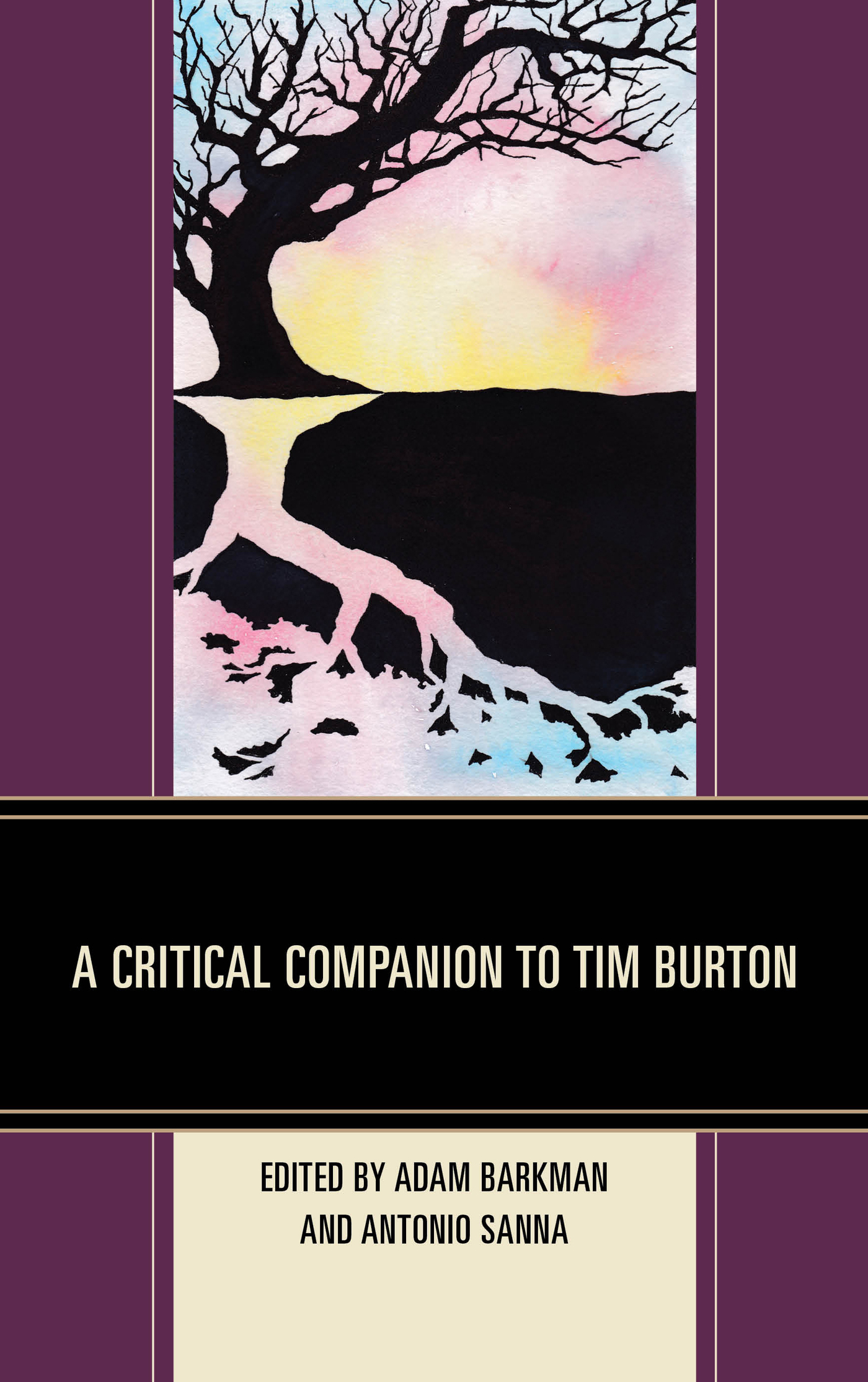A Critical Companion to Tim Burton
A Critical Companion to Tim Burton
Edited by
Adam Barkman and Antonio Sanna
LEXINGTON BOOKS
Lanham Boulder New York London
Published by Lexington Books
An imprint of The Rowman & Littlefield Publishing Group, Inc.
4501 Forbes Boulevard, Suite 200, Lanham, Maryland 20706
www.rowman.com
Unit A, Whitacre Mews, 26-34 Stannary Street, London SE11 4AB
Copyright 2017 by Lexington Books
An earlier version of chapter 14 appeared as Christol, Florent. Freak show Aesthetics and (Post-)Colonial Ideology in Pee Wee's Big Adventure. In Tim Burton: A Cinema of Transformations. Ed. Gilles Menegaldo. Montpellier: Presses universitaires de la Mditerrane, 2017. Reprinted with permission.
All rights reserved. No part of this book may be reproduced in any form or by any electronic or mechanical means, including information storage and retrieval systems, without written permission from the publisher, except by a reviewer who may quote passages in a review.
British Library Cataloguing in Publication Information Available
Library of Congress Cataloging-in-Publication Data
Names: Barkman, Adam, 1979- editor. | Sanna, Antonio, 1978- editor.
Title: A critical companion to Tim Burton / edited by Adam Barkman and Antonio Sanna.
Description: Lanham : Lexington Books, 2017. | Includes bibliographical references and index.
Identifiers: LCCN 2017036920 (print) | LCCN 2017043163 (ebook) | ISBN 9781498552738 (Electronic) | ISBN 9781498552721 (cloth : alk. paper)
Subjects: LCSH: Burton, Tim, 1958---Criticism and interpretation.
Classification: LCC PN1998.3.B875 (ebook) | LCC PN1998.3.B875 C75 2017 (print) | DDC 791.4302/33092--dc23
LC record available at https://lccn.loc.gov/2017036920
 TM The paper used in this publication meets the minimum requirements of American National Standard for Information Sciences Permanence of Paper for Printed Library Materials, ANSI/NISO Z39.48-1992.
TM The paper used in this publication meets the minimum requirements of American National Standard for Information Sciences Permanence of Paper for Printed Library Materials, ANSI/NISO Z39.48-1992.
Printed in the United States of America
Adam: To Loganjust in case
Antonio: To my students, who have followed the progress of this volume with enthusiasm
Introduction
In the suburbs of a large city, a strange child is born. The childs parents do not accept his diversity, defining him explicitly as a freak and releasing their cold hands that momentarily held him, abandoning the child to the world. The child, therefore, grows up in a charity home, where the Head of the Police Department nicknames him Stainboy and charges him with the duty to fight other deformed adolescents. These scenes come from The Origin of Stainboy, the sixth and final episode of an animated series written and directed by Tim Burton and broadcast in 2000 on
Tim Burton can certainly be considered one of the most popular and renowned artists of the present age. In his extremely heterogeneous career, he directed not only films, but also commercials (the 1998 Hollywood Gum and the Matrix-like 2000 advertisings for Timex I-Control watches) and two music videos (the 2006 Bones and the 2012 Here with Me, both by the rock band The Killers). Burton is also the (co-)producer of films such as Henry Selicks James and the Giant Peach (1996), Shane Ackers 9 (2009) and Timur Bekmambetovs Abraham Lincoln: Vampire Hunter (2012). His works were exhibited from November 22, 2009, to April 26, 2010, in a retrospective at the Museum of Modern Art in New York, and included about 700 of his drawings, photographs (in different formats), paintings, costumes, and puppets along with a program of his films. This multimedia exhibition, presented also at the Los Angeles County Museum of Art in 2011, clearly reflected the influence of Pop Surrealism, avant-garde performance art and low popular culture on Burtons work and his carnivalesque sensibility, according to the curators Ron Magliozzi and Jenny He.
All of his achievements have offered (and still offer) an incredibly fertile ground for critical examination, analysis and discussion. The chapters included in this collection present a comprehensive, multi-disciplinary analysis of the works of one of the worlds most renowned directors and artists. The essays are produced by scholars in diverse fields such as philosophy, literature, history, art, womens and gender studies, and film and media studies illuminate the entire artistic career of Burton up to the present day (2017), from his initial work for Disney and his first short films to both his major productions such as Batman (1989) and Alice in Wonderland (2010) and his less profitablebut still highly recognizablefilms such as Ed Wood (1994).
The volume in your handA Critical Companion to Tim Burtonilluminates the diverse facets of the directors work and, especially, his unique visual style, established firmly since Beetlejuice (1988) and consolidated throughout his entire career. Such a signature is easily identifiable in Burtons characteristic trademarks, from the frequent presence of dogs, the full moon, the towers on a hill and the use of black and white stripes to a series of Gothic paraphernalia such as pumpkins, scarecrows, skeletons, graveyards, windmills, and bare trees with fingered branches. His distinctive and personal touchalternating very colorful setting and dark atmospheres as much as juxtaposing verbal jokes and visual gags with the macabrejustifies the affirmation that Burton is truly a visionary director.
Certainly, the defining characteristics of his oeuvre are also the fruit of his solid relationships and frequent collaborations with acting stars such as Johnny Depp (who appears in eight of Burtons films) and Helena Bonham Carter (partner of the director from 2001 to 2014, mother of his two children, and also actress in seven of his films). Separate mention is needed for Burtons most active collaborator, composer Danny Elfman, who wrote the music for all of the directors films, with the exceptions of Ed Wood and Sweeney Todd: The Demon Barber of Fleet Street (2007). His soundtracks form a fundamental basis for the creation of the films atmosphere, especially through his frequent use of atonality, his Puccini-like use of leitmotifs, his evanescent choral themes, and, as Janet K. Halfyard sums up, his emphasis on minor keys, low-pitched melodies and textures, and frequent use of dissonance both at melodic and harmonic levels.
In recent years, the scholarship on Burton has proliferated with volumes such as The Philosophy of Tim Burton (edited by Jennifer L. McMahon) and Masters of the Grotesque: The Cinema of Tim Burton, Terry Gilliam, the Coen Brothers and David Lynch (by Schuy R. Weisharr). Book-length publications that examine the American directors oeuvre in the media arts include Aurlien Ferenczis Masters of Cinema: Tim Burton and Jim Smith and J. Clive Matthews Tim Burton, both of which offer plot summaries, anecdotal references to the shorts and the films, and many insights on the biography of Burton. Edwin Pages Gothic Fantasy: The Films of Tim Burton considers the directors works as fairy tales and emphasizes their symbolic meaning as well as Burtons preference for the use of emotional imagery rather than plot. Similarly, Alison McMahans monograph The Films of Tim Burton: Animating Live Action in Contemporary Hollywood interprets the directors works as pataphysical films. Pataphysical films follow an alternative narrative logic that is based on intertextual, nondiegetic references rather than on round and emotional characters or complex plots. According to McMahan, Burtons works ironically comment upon and make fun of established systems of knowledge by satirizing the scientific academy as much as the classical Hollywood aesthetics through the use of unrealistic, visible special effects and make-up. Paul A. Woods collection of essays and reviews
Next page
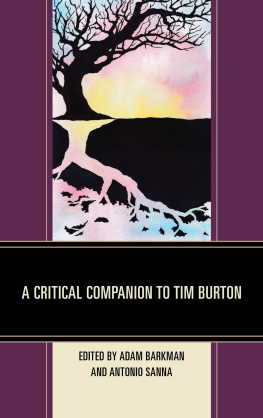
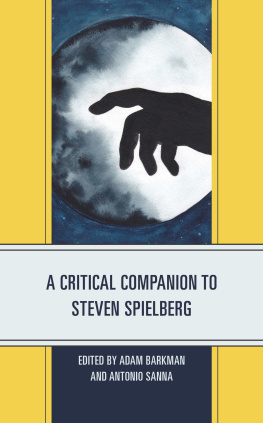


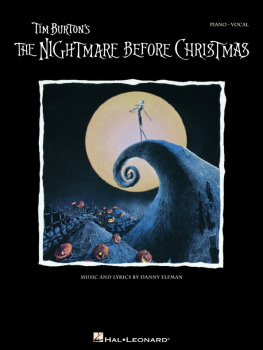

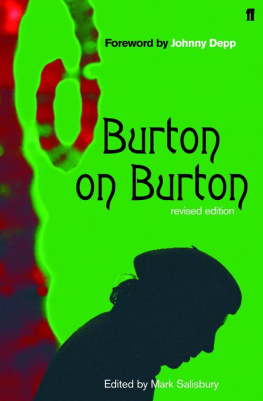
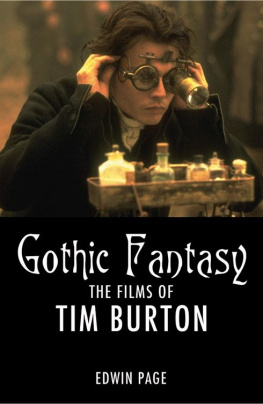
 TM The paper used in this publication meets the minimum requirements of American National Standard for Information Sciences Permanence of Paper for Printed Library Materials, ANSI/NISO Z39.48-1992.
TM The paper used in this publication meets the minimum requirements of American National Standard for Information Sciences Permanence of Paper for Printed Library Materials, ANSI/NISO Z39.48-1992.